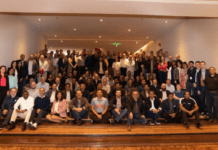Disputes can break out in any corner of the workplace. In fact, many of us will be accustomed to a lot of shouting and noise at the workplace. However much we deny it, workplace violence does exist and is very much present in our Indian workplaces as well.
In one of the surveys, it was reported that 55 per cent of employees in India have experienced workplace bullying, which may involve managers or subordinates humiliating an employee through verbal abuse or mental torture.
Video surveillance has been traditionally used to curb and report such instances of workplace violence, but a new technology — audio analytics — has gained popularity amongst security staff.
Audio analytics is a sound-detection technology, which can be installed at the workplaces. The sound detecting sensors will alert the security personnel immediately if there are instances of loud shouting and commotion.
The sound-detection sensors help the security operators identify the characteristics of the sound such as gunshots, aggression, car alarm or glass break. This way, security staff can immediately detect real-time aggression at the workplace and take timely action.
Some would say that cameras are enough, but are they really?
It is not really possible to install surveillance cameras in every corner of the workplace, but sound sensors can certainly be. The audio analytics technology is capable of detecting and preventing even the slightest workplace violence. This is because, the technology allows one to monitor even blind spots, which cannot be monitored through a camera.
The audio analytics technology will be a huge addition to camera surveillance. The two can be used in combination to ensure workplace safety.
In the healthcare industry, the issue of employee safety is a serious concern. In fact, healthcare workers such as doctors and nurses face unavoidable verbal disputes with patients’ family members and attendants at the workplace almost on a daily basis.
A survey conducted by a medical researcher states that almost 90 per cent of healthcare workers have experienced instances of either verbal or physical assault at the hospitals. Doctors are the ones who bear the maximum brunt of the patients’ family members’ wrath and frustration, followed by the nurses and other hospital staff.
Many hospitals in the US have felt the need for a strong surveillance technology, which can prevent violence against nurses and caretakers at hospitals. Just as in India, the US is used to witnessing and encountering instances where patients in general wards and mental-health wards verbally and physically assault the medical staff.
In London, many station staff, drivers and cleaners at the transport services have been often humiliated by passengers during the pandemic. Almost 76 per cent of staff have experienced instances of physical violence. Drivers have revealed to the media that almost every other day they end up facing some instance of violence at the workplace. One of them was even kicked by a passenger, and when he tried to take refuge behind a door, the passenger tried to kick down the door.
A nurse who spoke to the media on conditions of anonymity, talks of being abused regularly while handling mental patients, some of whom have even tried to physically assault her.
In all such instances of violence, ‘sound’ is the defining factor. Identifying the characteristics of ‘sound’ can prevent a minor aggressive exchange of words from developing into a serious case of physical violence. Security people can intervene immediately, before the matter escalates further.
The growing instances of workplace violence need to be and must be addressed in a strategic way. Workplace counselling, improved communication and sensitisation drives are common ways of tackling such issues, with far from extraordinary results. Such instances need to be reported and immediate action needs to be taken against the culprits.
Value our content... contribute towards our growth. Even a small contribution a month would be of great help for us.
Since eight years, we have been serving the industry through daily news and stories. Our content is free for all and we plan to keep it that way.
Support HRKatha. Pay Here (All it takes is a minute)




































